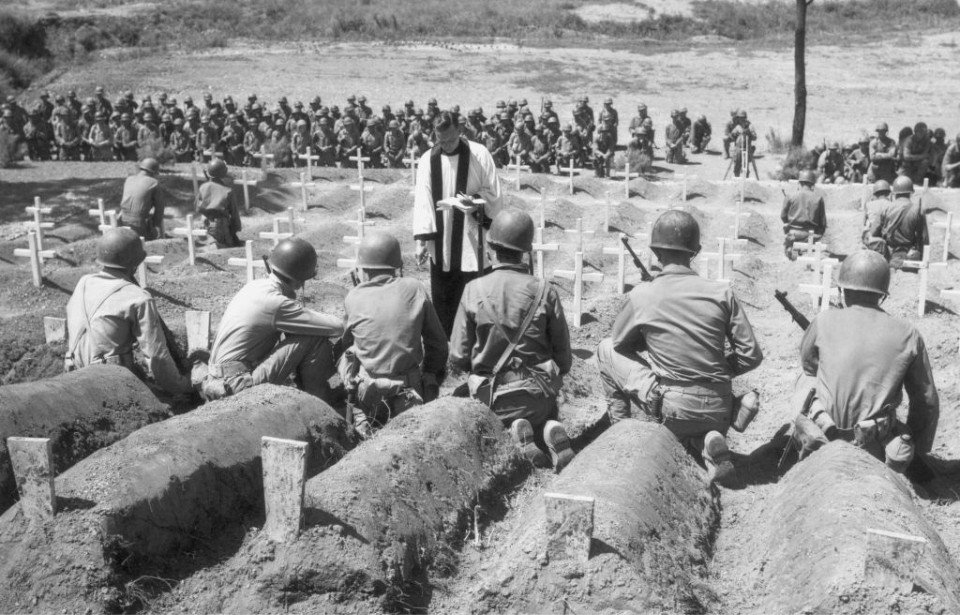The above image, captured during the Korean War, shows one of the many roles chaplains filled during wartime: honoring the dead during burial services. Taken sometime around 1950, it shows a Christian minister leading a funeral service for a large number of American dead. As with previous conflicts, Chaplains played an important role in Korea, serving as the spiritual and emotional anchors for soldiers.
Irrespective of their own religious affiliations, these clergymen catered to the spiritual needs of soldiers of all faiths, offering counseling, leading religious services and administering sacraments. They were a source of strength and hope, delivering prayers and words of comfort during times of intense fear and despair. They were often found on the frontlines, experiencing the same hardships and dangers as regular troops.
When the Korean War broke out, many of these men were serving with the Reserves or the National Guard, with the US Army only retaining 706 active chaplains. Showing their dedication, only three years later that total had risen to 1,618. Although they were largely sent overseas to look after the living, in the earliest years of the conflict, they spent the vast majority of their time managing the wounded and those who’d fallen in combat.
However, that wasn’t all they did. As can be seen by the number of photos taken of these chaplains giving sermons in Korea, they spent a fair amount of their time providing more “typical” ministerial services. The padres were dedicated to their men, standing by their side, even in immediate danger. Four of them were taken as prisoners of war (POWs), including Army Chaplain Emil J. Kapaun.
While fighting near the Chinese border on November 2, 1950, Kapaun set to work providing medical assistance to injured US service members and attempting to get them out of No Man’s Land. Despite their efforts to repel the enemy, they were forced to escape before becoming fully surrounded.
Kapaun made the decision to stay with the injured men, despite knowing the Chinese would capture him. He was able to negotiate the lives of these soldiers, but was taken as a POW and wound up not surviving the war. For his bravery, he was awarded a Medal of Honor.
While Kapaun was successful in saving the lives of his men, the enemy wasn’t always so merciful toward chaplains in Korea. On July 16, 1950, the Chaplain-Medic Massacre occurred in the midst of the Battle of Taejon. Thirty injured US Army soldiers and their padre were murdered by the Korean People’s Army after they became stranded at the top of a mountain.
More from us: 24th Infantry Bazooka Team Taking On the Enemy During the Battle of Osan
The chaplain and medic were the only ones tending to the wounded. When the enemy attacked, the medic was able to escape, but the padre stayed with his men until the end, praying over their bodies as they were killed.
